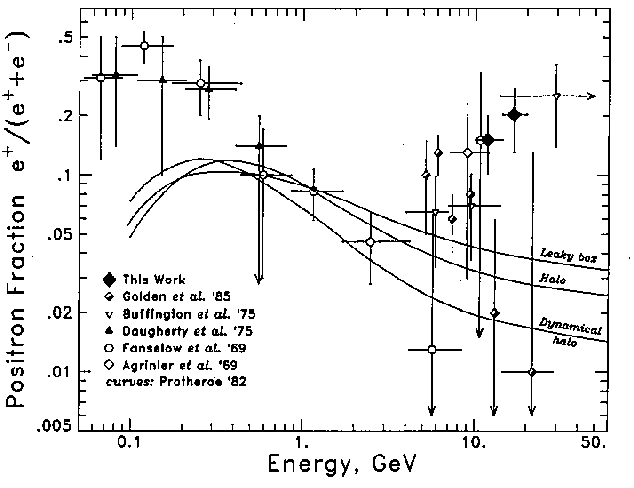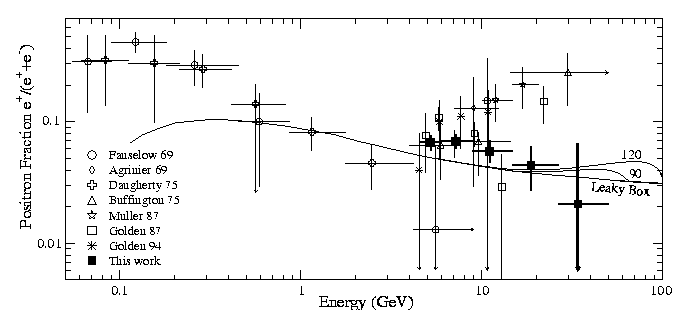
The positron fraction is the number of positrons divided by the total electronic (electrons plus positrons) component in the primary cosmic radiation. Results published before the advent of HEAT on the behavior of the positron fraction as a function of primary energy (see, e.g., Astrophysical Journal 312, 183 (1987); "This Work" in the legend on the figure below refers to this paper) indicated a rise with energy up to about 20 GeV, in violation of current models of cosmic-ray creation and propagation in the Galaxy:

This rise could have been the signature of dark matter annihilation in the halo of our Galaxy, a very significant phenomenon (if true) possibly hinting at a resolution of a great mystery: that of the composition of 90% of the Universe. The positron fraction required verification and extension to higher energies, or rebuttal.
Since the electrons and positrons of interest account for less than 1% of the total cosmic-ray flux, a determination of the positron fraction requires a strong weeding out of the undesired contamination by hadronic primaries, principally protons and alpha particles (nuclei of Helium atoms). This is compounded by the fact that the background is charge asymmetric (protons and alpha particles are positively charged, like the positrons, whereas the negatively charged electrons have a much lesser degree of contamination); insufficient background rejection would result in an artificially large positron fraction. By combining several state-of-the-art detectors (a time-of-flight system, a transition radiation detector, a precision tracking hodoscope immersed in the strong magnetic field of a superconducting magnet, and an electromagnetic calorimeter), we have attained an unprecedented degree of electron and positron identification and hadronic background rejection. We have plotted the variation of the positron fraction as a function of energy and obtained the following results (filled black squares):

We see no evidence for the significant rise in the positron fraction previously reported at energies above about 10 GeV, and instead we support a primarily secondary positron production mechanism, in better agreement with theoretical predictions (i.e. when protons and other hadronic primaries interact with ordinary matter at their source, such as at supernova shock fronts, secondary particles are produced, some of which decay into positrons; primary sources of positrons such as hypothetical dark matter particle annihilation would also be sources of electrons in the same amounts, resulting in a positron fraction tending to 0.5, contrary to what we observed). We speculate that the positron fraction rise indicated previously was due to insufficient background rejection resulting in the contamination of the positron samples.
A postscript preprint file of our positron fraction results published in the Physical Review Letters is available by clicking here. Warning: the file is large (426k) and the contents of the paper rather technical.